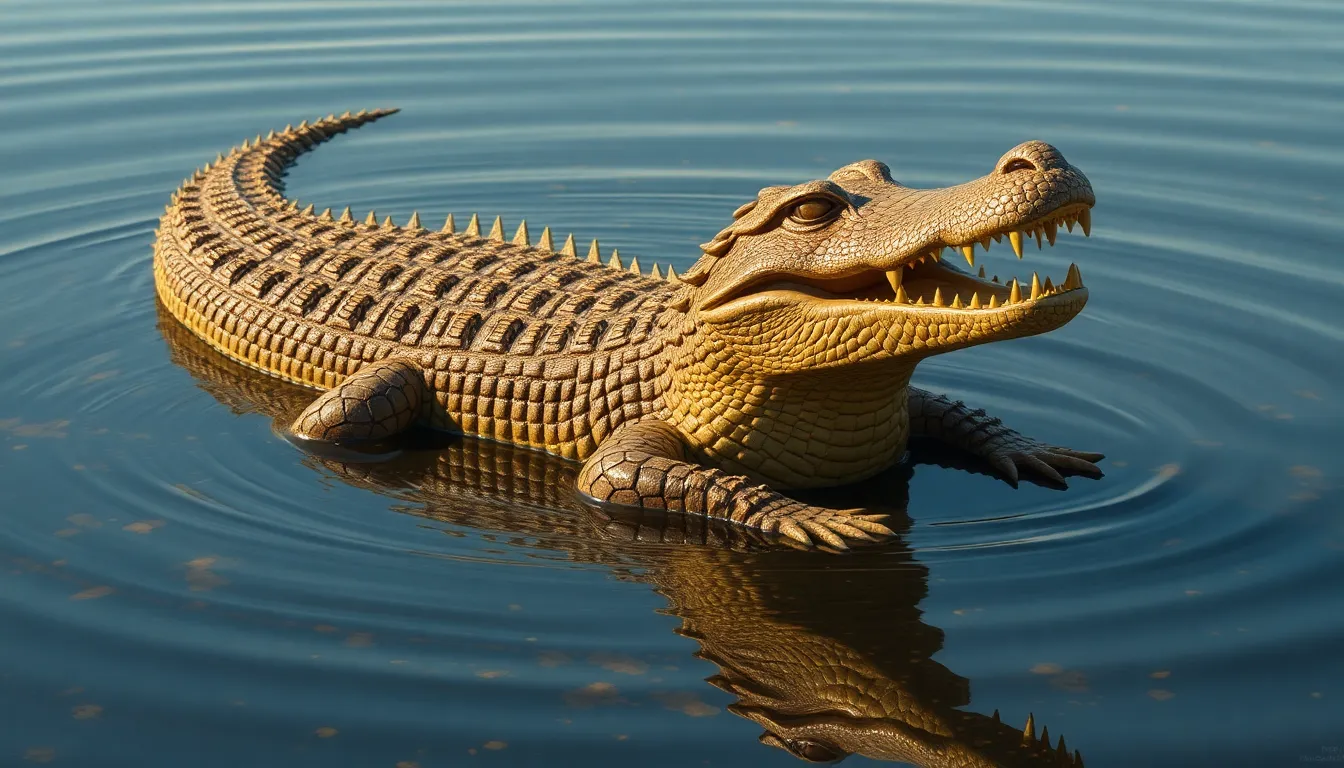The Spiritual Importance of the Egyptian Crocodile
I. Introduction
The Egyptian crocodile, primarily represented by the species Crocodylus niloticus, holds a significant place in the tapestry of ancient Egyptian culture and mythology. Revered for its formidable presence in the Nile River, the crocodile was not just a fearsome predator but also a symbol of strength, fertility, and protection. Understanding its spiritual symbolism reveals much about the beliefs and practices of ancient Egyptians, showcasing a complex relationship with the natural world.
II. The Egyptian Crocodile in Ancient Mythology
In ancient Egyptian mythology, the crocodile plays a crucial role in various creation myths. It is often associated with the chaotic waters from which life emerged. In these myths, the crocodile embodies both chaos and creation, reflecting the duality of existence.
One of the most prominent figures connected to the crocodile is Sobek, the crocodile god. Sobek was revered as the protector of the Nile, the creator of the world, and a deity associated with fertility and military prowess. His dual nature as both fierce and nurturing highlights the complex symbolism of the crocodile in ancient Egyptian thought.
III. Symbolism of the Crocodile in Ancient Egypt
The symbolism of the crocodile in ancient Egypt is multifaceted, representing both fertility and protection. As a creature that thrives in the fertile waters of the Nile, the crocodile was seen as a guardian of the land’s fertility, ensuring bountiful harvests and the continuation of life.
The crocodile’s dual nature is striking:
- Fearsome Predator: As a top predator in its environment, the crocodile instilled fear. This aspect was acknowledged and respected in religious practices.
- Caring Mother: Female crocodiles exhibit nurturing behaviors towards their young, which symbolized protection and maternal care, paralleling the protective aspects of deities like Sobek.
IV. The Crocodile in Egyptian Art and Iconography
The crocodile’s significance is vividly depicted in ancient Egyptian art and iconography. It can be found in various forms:
- Sculptures: Large statues of Sobek often depicted him with a crocodile head, illustrating his divine nature and power.
- Paintings: Tomb paintings frequently showcased scenes of Sobek, reflecting his importance in the afterlife and the protection of the deceased.
- Hieroglyphs: The hieroglyphic representation of the crocodile was used in writing and served as a symbol of strength and protection.
Additionally, the crocodile influenced religious artifacts and tomb designs, emphasizing its role in both life and death. The imagery of the crocodile was a reminder of the balance between creation and destruction, fertility and chaos.
V. Rituals and Worship Surrounding the Crocodile
The reverence for the crocodile extended to various rituals and worship practices. Sacred sites and temples dedicated to Sobek were established, most notably in the city of Kom Ombo. These temples served as centers of worship where devotees sought blessings and protection.
Ceremonies and offerings were made to honor the crocodile, including:
- Offerings of food and goods at temples.
- Rituals to invoke Sobek’s favor for fertility and protection.
- Festivals celebrating the Nile and its life-giving properties where crocodiles were often featured.
VI. The Crocodile’s Role in Egyptian Cosmology
Within the hierarchy of deities, the crocodile occupies a significant position. Sobek, as the crocodile god, was considered a protector of the pharaohs and a crucial figure in the cosmic order. His association with the Nile reinforces the crocodile’s role in Egyptian cosmology, linking it to the life-giving waters that nourished the land and its people.
The crocodile symbolizes the Nile’s dual nature: a source of sustenance that could also unleash destructive floods. This duality reflects the ancient Egyptians’ understanding of balance in nature and the universe.
VII. Contemporary Perspectives on the Crocodile’s Spiritual Significance
In modern times, interpretations of ancient beliefs surrounding the crocodile continue to evolve. Scholars and spiritual practitioners explore the ancient significance of the crocodile in contemporary spirituality, recognizing its embodiment of strength, protection, and the nurturing aspects of nature.
The crocodile’s place in contemporary culture can be seen in various forms:
- Literature and art that draw inspiration from ancient Egyptian mythology.
- Spiritual practices that incorporate the symbolism of the crocodile for strength and protection.
- Educational programs focusing on ancient Egyptian culture that highlight the relevance of the crocodile in understanding ecological balance.
VIII. Conclusion
In summary, the crocodile holds a profound spiritual importance in ancient Egyptian culture, symbolizing fertility, protection, and the complex interplay between chaos and order. Its connection to deities like Sobek illustrates the deep reverence the ancient Egyptians had for this powerful creature and its role in their understanding of the natural world.
The legacy of the Egyptian crocodile endures today, inspiring modern interpretations of its significance in spirituality and culture. As we continue to explore and reflect on the beliefs of ancient civilizations, the crocodile remains a powerful symbol of life, strength, and the vital connection between humanity and nature.




